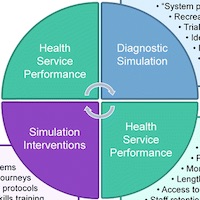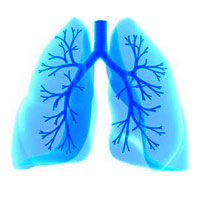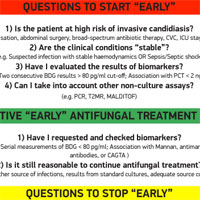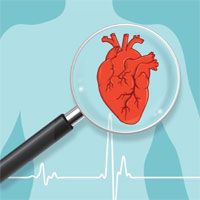Tag: diagnostics

Integrating host response and unbiased microbe detection for lower respiratory tract infection diagnosis in critically ill adults
Lower respiratory tract infections (LRTIs) are the leading cause of infectious disease-related deaths worldwide yet remain challenging to diagnose because of limitations in existing microbiologic tests. In critically ill... read more

Translational Simulation: Not “Where?” But “Why?” A Functional View of In SITU Simulation
Healthcare simulation has been widely adopted for health professional education at all stages of training and practice and across cognitive, procedural, communication and teamwork domains. Recent enthusiasm for in situ simulation—delivered... read more

Oliguria and AKI in Critically Ill Children
Nearly one in five critically ill children with acute kidney injury (AKI) do not experience increase in serum creatinine. These acute kidney injury events, which are only identified by urine output criteria, are associated... read more

Why Most Diagnostic Procedures Aren’t Beneficial
We often assume that diagnostic procedures will help patients. A lot of training goes into learning how to do these procedures. Procedures are dramatic. We like performing them. Patients are impressed, perceiving that we... read more

Updates and Controversies in the Early Management of Sepsis and Septic Shock
For patients in the ED who are suspected of having sepsis, swift, effective management is vital to improving outcomes. This issue reviews the latest evidence on the diagnosis and treatment of sepsis and septic shock: ... read more

Indications and Outcomes of Extracorporeal Life Support in Trauma Patients
Data from the largest registry of critically ill trauma patients receiving extracorporeal life support (ECLS) demonstrates reasonable survival. With growing experience and improved safety profile, trauma should not be considered... read more

Time to Add a Fifth Pillar to Bedside Physical Examination
Inspection, palpation, percussion, and auscultation have been the 4 pillars of clinical bedside medicine. Although these basic methods of physical examination have served us well, traditional bedside examination, for a number... read more

Effect of Occupancy on Critically Ill Admissions
Effect of Emergency Department and ICU Occupancy on Admission Decisions and Outcomes for Critically Ill Patients. The volume of ICU admissions from the ED has increased around 50% from 2001-2009. Hospitals struggle with this... read more

Considerations in the Diagnosis of Idiopathic Pulmonary Fibrosis
The clinical practice guideline on diagnosis of idiopathic pulmonary fibrosis (IPF) by Raghu and colleagues has been helpful in addressing the complexities of radiological and pathological features in diagnosing IPF. The... read more

Procalcitonin Reduces Antibiotic Use with No Negative Outcomes
The elderly patient presenting to the ED with nonspecific symptoms remains a diagnostic and therapeutic challenge. Often, these patients arrive with general complaints ranging from altered mental status to weakness, subjective... read more

Selected Imaging Controversies in ED Trauma
Traumatic injuries are amongst the most common presentations for all emergency departments (ED). In 2010, there were over 1 million patients in Canada who visited the ED for trauma, result in an cost of almost 9 billion dollars.... read more

Sepsis Test Could Show Results In Minutes
A new rapid test for earlier diagnosis of sepsis is being developed by University of Strathclyde researchers. The device, which has been tested in a laboratory, may be capable of producing results in two-and-a-half minutes,... read more

Antifungal Treatment in the ICU
Invasive fungal infections (IFIs) are a major cause of morbidity and mortality in critically ill patients. Almost 80% of IFIs are due to Candida spp., which are the third most common isolated microorganisms in the intensive... read more

Hoopla Aside, hs-cTnI is Not Catching Missed Mis
We have been searching for a tool to identify myocardial infarction patients who are truly safe for discharge ever since Pope, et al., found that we were discharging two percent of patients with MIs from the emergency department.... read more








